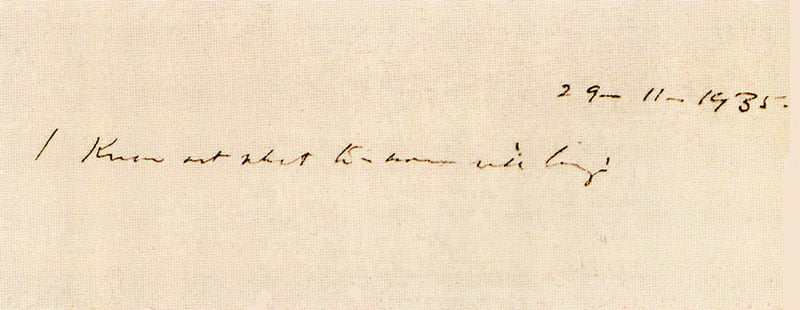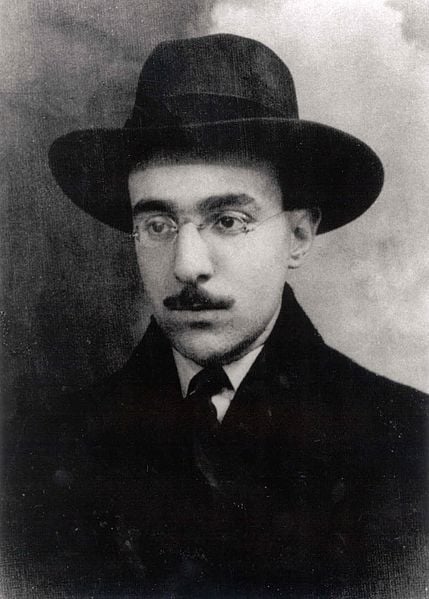We, bibliophiles, are well-acquainted with Virginia Woolf, James Joyce, and other iconic Modernist figures. Although a prominent Modernist writer himself, Fernando Pessoa is still overshadowed by these other authors – probably because much of his work had to be extensively studied before publication, so it wasn’t until the 1940s that his talent received worldwide recognition.
Well, Fernando Pessoa is the Portuguese equivalent of what Virginia Woolf is for the English, and James Joyce is for the Irish – the most important Modernist writer who was, in fact, at the epicenter of the introduction of literary Modernism to Portugal. So, if you’ve ever wondered who Fernando Pessoa was, we’re here to shed light on his life. Keep reading to discover nine incredible facts about Fernando Pessoa!
1. Fernando Pessoa lived in South Africa for 10 years
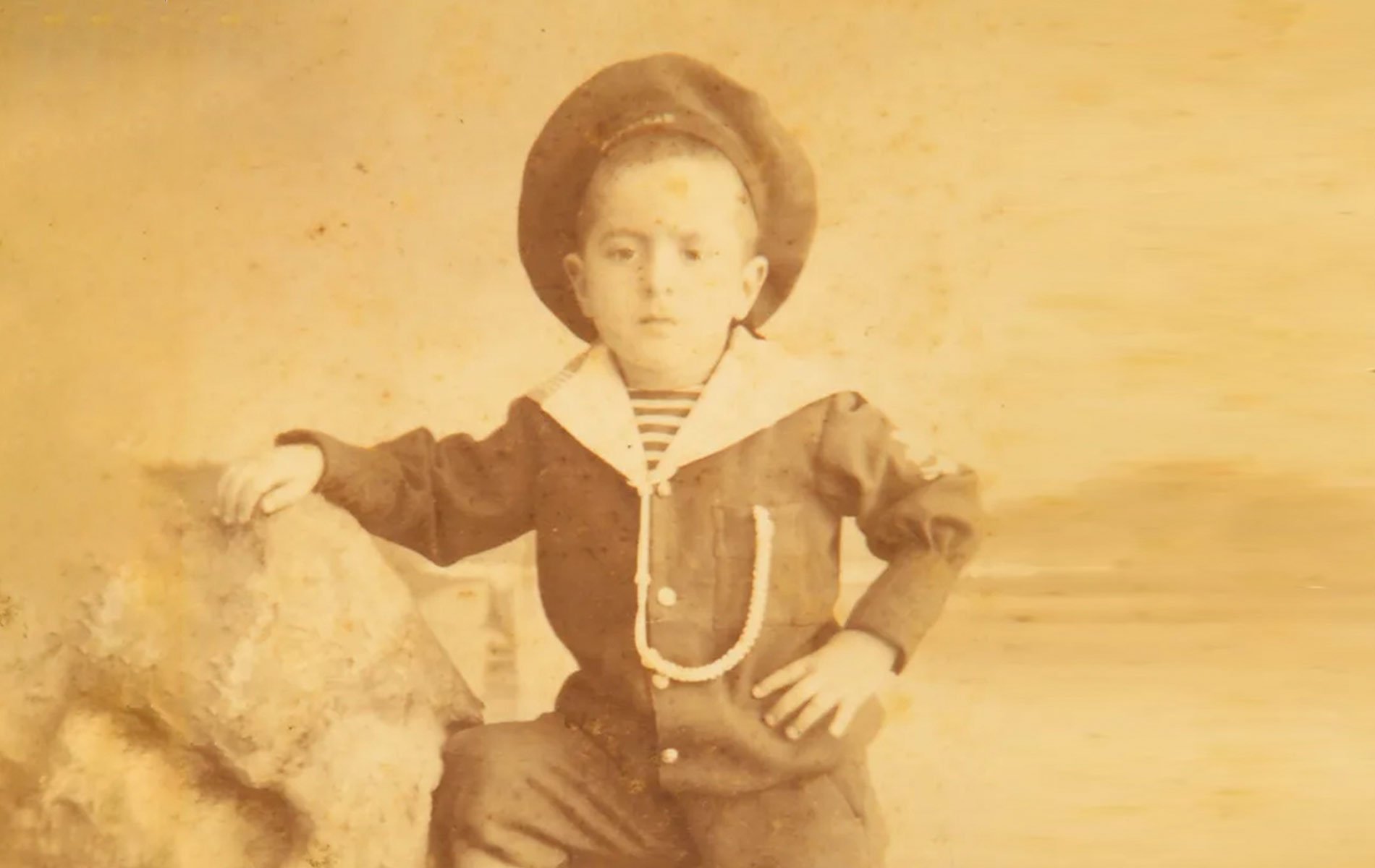
Fernando Pessoa was born on June 13, 1888 in Lisbon. Unfortunately, he experienced a tumultuous early childhood marked by loss – when he was five, he lost his father; shortly after, his baby brother died too.
These events set the stage for a significant change in young Fernando’s life when his mother, Maria Madalena Nogueira Pessoa, remarried in late 1895. Her new husband, João Miguel dos Santos Rosa, was appointed as the Portuguese consul in Durban, so the family moved to South Africa at the beginning of 1896. At the time, Fernando was just seven years old.
Pessoa spent almost ten years in South Africa. Despite being far from his homeland, this period was rather formative and fruitful from an educational perspective. He received his education at a primary school run by Irish and French nuns before attending Durban High School, where he excelled academically.
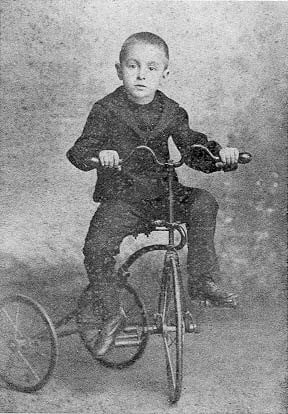
It was during this time that Pessoa developed his multilingual abilities – although he was still very young, he was already fluent in English and French, and he continued speaking Portuguese perfectly. His literary interests blossomed as he immersed himself in the works of English poets and authors like Keats, Shelley, Shakespeare, Dickens, Poe, and Byron.
In short, although Pessoa is widely known as one of the most prolific authors who described Lisbon as best as one possibly can, Pessoa’s experiences in South Africa, particularly his English education, had a major impact on his literary development. In other words, if it weren’t for the time spent in South Africa, we may not have even met the Pessoa we know today.
Later on, Pessoa himself wrote about his experiences in South Africa, stating that “I was educated there, this English education being a factor of supreme importance in my life, and, whatever my fate be, indubitably shaping it.”
In August 1905, when he was 17 years old, Pessoa returned to Lisbon and, from that point on, rarely left the country.
2. Fernando Pessoa Started Writing When He Was a Kid
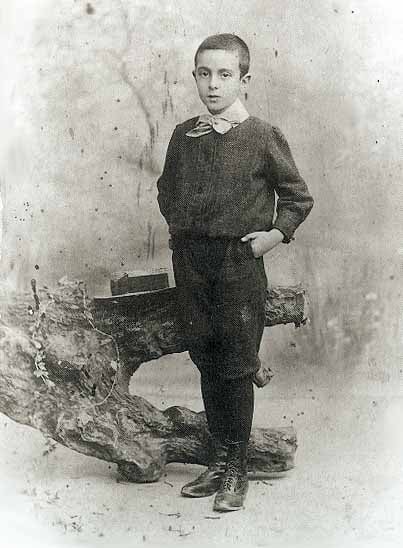
The young Pessoa’s academic prowess and burgeoning creativity were evident during his time in Durban. He began writing poems and stories and even created mock newspapers, foreshadowing his future as a prolific writer. When he was only 15, Pessoa was awarded the Queen Victoria Memorial Prize for the best English essay in the Matriculation Examination.
Shortly after, several magazines published his poems, although they weren’t published under his name – an early preview of his later experiment with heteronyms.
Back in Lisbon, Pessoa did not rush to study literature. Instead, he started studying diplomacy, even though he never finished his studies. He began spending more and more time in libraries, becoming an autodidact by reading as much as he could.
After his grandmother had died and left him some money, Pessoa opened his publishing house, which, unfortunately, failed and closed down shortly after. It wasn’t until 1912 that the literary circles in Lisbon met the literary Pessoa. His entry point was a critical essay he wrote for the journal A Águia.
3. Fernando Pessoa Was a Lonely Boy but Regarded as Incredibly Talented
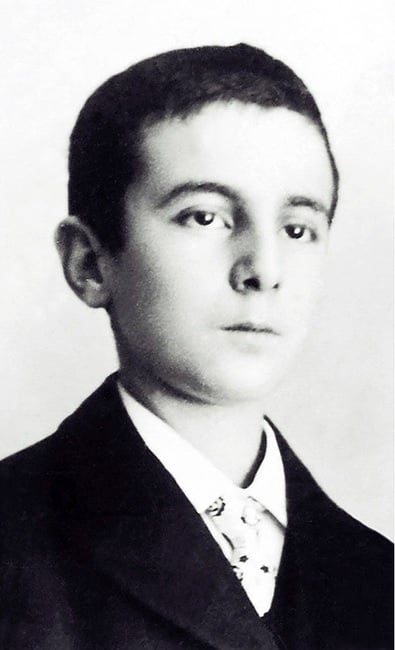
“He had spent his childhood alone. He never joined any group. […] He never belonged to a crowd. The circumstances of his life were marked by that strange but rather common phenomenon – perhaps, in fact, it’s true for all lives – of being tailored to the image and likeness of his instincts, which tended towards inertia and withdrawal.”
These are the words Pessoa used to describe himself (indirectly) as a child. However, we have other evidence to rely on to confirm his statements. One of his schoolmates from South Africa recalled that Pessoa spent most of his time reading. He read so much that the others started thinking he’d ruin his health this way. In fact, he was always pale and thin, and he never participated in any sports whatsoever.
Nonetheless, even though Pessoa was never part of a group, everyone regarded him as incredibly talented – they likely didn’t see him as an outcast, as one would initially think. “[…] in spite of the fact that he had not spoken English in his early years, he had learned it so rapidly and so well that he had a splendid style in that language. Although younger than his schoolfellows of the same class he appeared to have no difficulty in keeping up with and surpassing them in work.”
4. Fernando Pessoa Founded Several Cultural Magazines
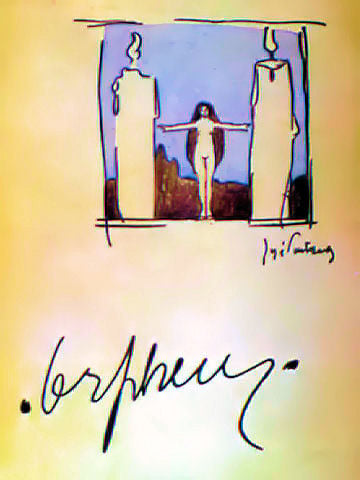
While in Lisbon, Fernando Pessoa worked with and even founded several cultural and literary magazines, now considered the pillars of the Modernist literary movement in Portugal.
Let’s start with Orpheu, the journal of the Grupo de Orfeu, a prominent literary movement in Portugal that introduced Modernism. Fernando Pessoa, alongside Almada Negreiros and other Modernist writers and artists, was responsible for this major cultural change. Although they published only two issues because the group lacked financial means, they ended up leaving a significant mark on Portuguese literature and art due to its bold content.
Pessoa also founded Athena, a magazine focused on art and literature. This publication, which ran from 1924 to 1925, featured works by Pessoa and his heteronyms, as well as other contemporary Portuguese writers and artists.
Over the years, Pessoa worked as a freelance writer, translator, literary critic, and political analyst. His works were published in more than 20 magazines.
5. Fernando Pessoa Rarely Left Lisbon
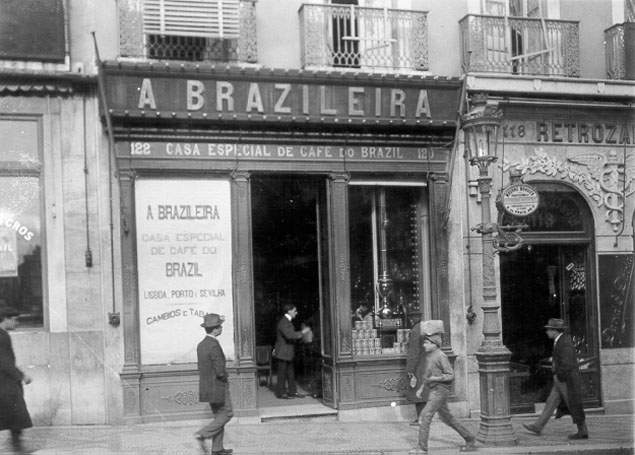
Upon returning to Lisbon from South Africa in 1905 at the age of 17, Fernando Pessoa rarely left the city for the rest of his life. This close relationship with and spiritual attachment to Lisbon influenced his work tremendously.
Pessoa’s decision to remain in Lisbon was largely due to his deep connection with the city and his introverted nature. He found comfort and inspiration in Lisbon’s familiar streets, cafes, and neighborhoods. The city became not just his home but also a central character in much of his writing.
One of Pessoa’s most frequented locations in Lisbon was Café A Brasileira in the Chiado district – now one of the most sought-after tourist destinations for bibliophiles. This café became a regular meeting place for Pessoa and other intellectuals of the time. He would spend hours there writing, reading, and spending quality time with fellow writers and artists. Today, a bronze statue of Pessoa sits at one of the café’s outdoor tables, commemorating his frequent presence there.
Another significant place for Pessoa was the Martinho da Arcada café in Praça do Comércio. He often visited this café in the afternoons, writing and meeting with friends. It’s said that he drank his last coffee here just days before his death. The cafe still operates, and Pessoa still has a reserved table there.
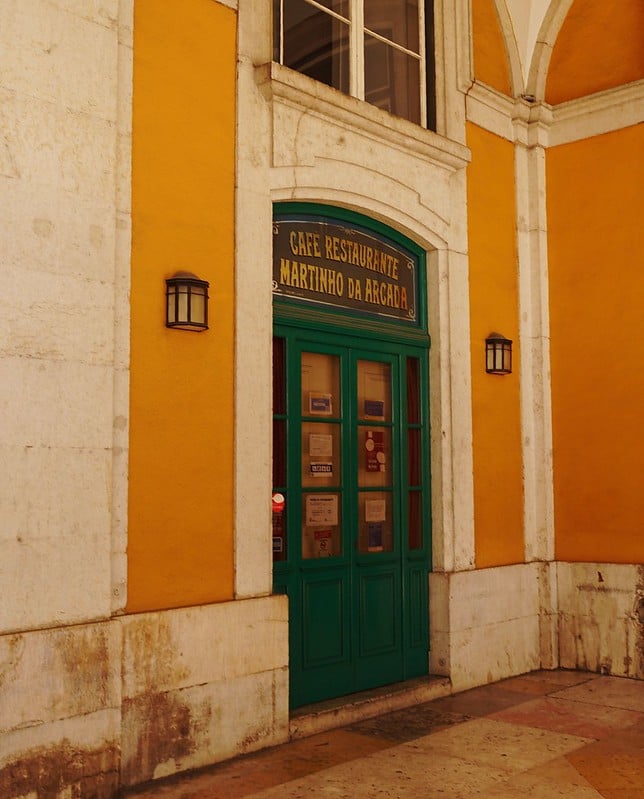
Although he spent much time among other writers and artists, Pessoa’s life in Lisbon was rather lonesome. Pessoa himself wrote that he “had the tendency to create around me a fictitious world, surrounding myself with friends and acquaintances that never existed.”
He lived modestly, moving between various rented rooms throughout the city. His final residence was at Rua Coelho da Rocha in Campo de Ourique, where he lived from 1920 until he died in 1935. This house has since been converted into Casa Fernando Pessoa, a museum dedicated to his life and work.
6. Fernando Pessoa Had Three Main Heteronyms
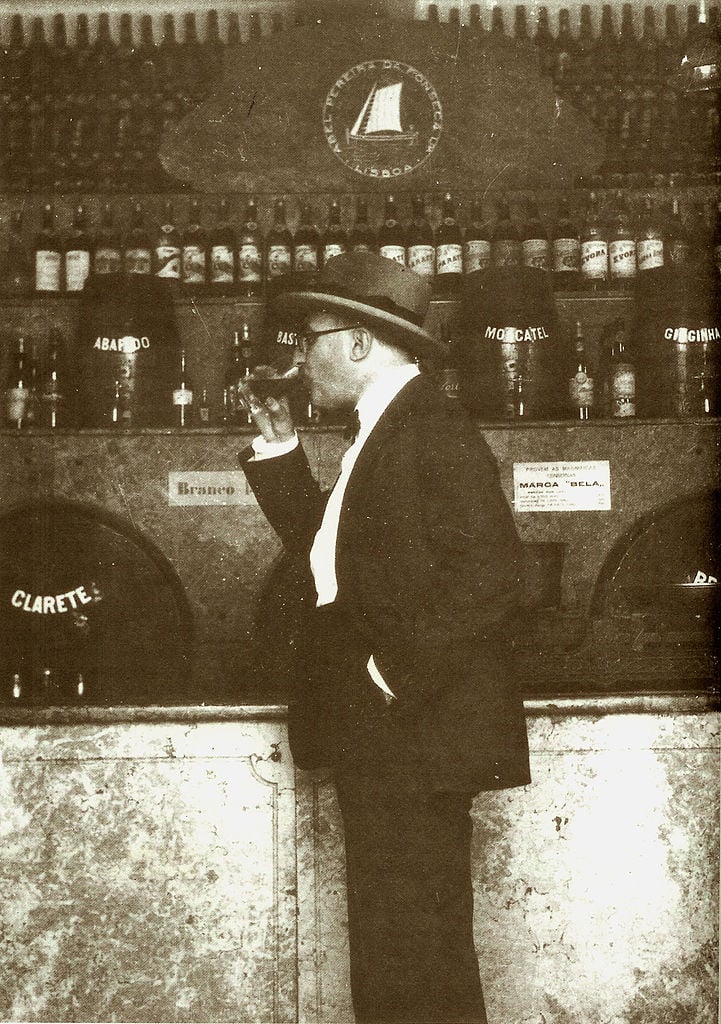
Pessoa coined his first heteronym when he was only six years old. It was called Chevalier de Pas. In fact, scholars think that, at the time, Pessoa actually regarded Chevalier de Pas as a real human being, a kind of pen pal.
It’s important to understand that Pessoa’s heteronyms weren’t pseudonyms. A writer uses pseudonyms to sign a work – ultimately, the writer himself/herself writes said work. A heteronym, on the other hand, is a kind of alter ego – a character who becomes a writer who distinguishes himself from the writer who coined him.
Pessoa once wrote, “I break my soul into pieces, and into different persons.” He even thought that, at times, he could see and hear the heteronyms he had created – given that his grandmother had been mentally ill, Pessoa himself thought this could have been a sign of insanity, although it has never been fully confirmed that he suffered from any illnesses.
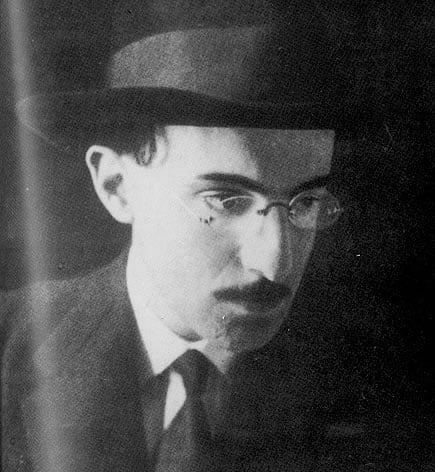
Pessoa didn’t hide his heteronyms – although one would expect him to do so. He was rather honest about this. Those whom he interacted with stated that “He could be a delightful man, full of charm and good humor, a humor that was very British […] But this role was also that of a heteronym, which saved him from intimacy with anyone while allowing him to take a modest part in the normal feast of daily life.”
Pessoa had a lot of heteronyms, although only three seem to have been closer to him:
- Alberto Caeiro, who wrote only poetry and had no profession
- Ricardo Reis, a physician and a classicist living in Brazil who never questioned life and accepted his fate
- Alvaro de Campos, a bisexual naval engineer living in Lisbon who was gifted with, as Pessoa confirmed, “all the emotion that I allow neither in myself nor in my living.”
- Bernardo Soares, a semi-heteronym because he partly resembled Fernando Pessoa – his lifestyle, temperament, and experiences.
In total, over 72 heteronyms have been identified in Fernando Pessoa’s writing!
7. Fernando Pessoa Translated Books into Portuguese
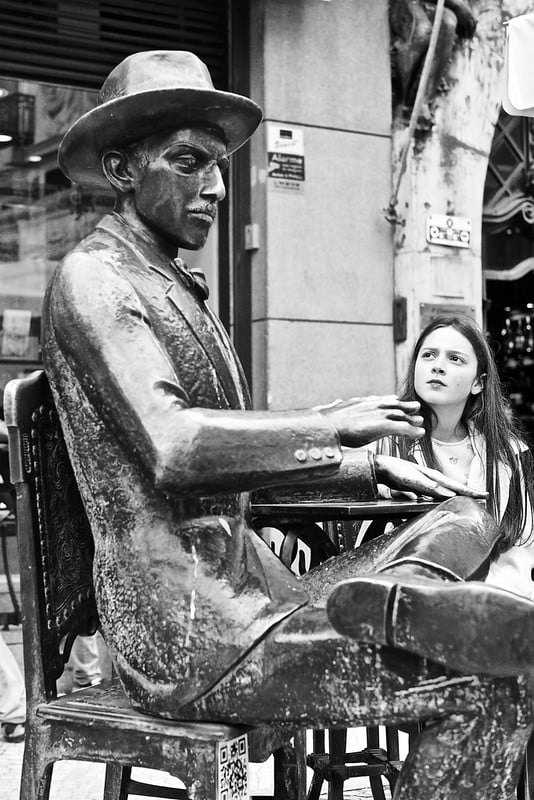
Have we already mentioned that Pessoa wrote mainly in English, not Portuguese? Well, his Portuguese didn’t just gather dust on his brain shelves. Pessoa translated books into Portuguese. He was the one who brought The Scarlet Letter by Nathaniel Hawthorne to the Portuguese literary market. He also translated numerous short stories written by Edgar Allan Poe into Portuguese.
Other writers introduced to the Portuguese thanks to Pessoa’s translations include:
- William Sydney Porter, known as O. Henry
- Alfred Tennyson, an English Poet
- William Wordsworth
- John Greenleaf Whittier
- Walt Whitman
- Helena Blavatsky, a Russian-American author and mystic
- Charles Webster Leadbeater, an author of occult books
- Annie Besant, a British theosophist
- Mabel Collins, a British occultist and author of more than 40 books.
8. Fernando Pessoa Was Passionate about Mysticism
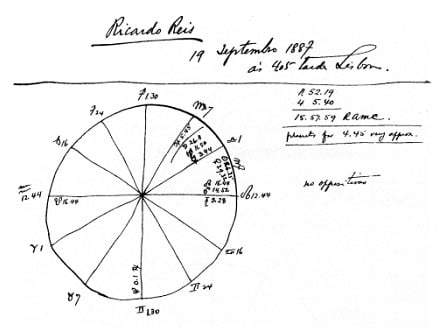
To the untrained eye, Fernando Pessoa was a poet, essayist, and literary critic. As we research more about his passions though, we discover that he didn’t actually spend all his time writing. He was quite interested in mysticism and the occult, which eventually deeply influenced his literary output. As Yvette Centeno, who has commented on Pessoa’s association with esotericism, pointed out, “Literary creation is, for Fernando Pessoa, one of the faces of initiation’s mystery.”
Pessoa was likely first introduced to the matter between 1912 and 1914 while living with his aunt and cousins. During those years, he took part in spiritualist sessions carried out at home, although Pessoa didn’t show too much interest back then.
It wasn’t until 1915-16 that he started learning more about it and even translated several books about theosophy and esoterism. At the end of March 1916, Pessoa had several experiences that made him think he was a medium. He also tried something called psychography or automatic writing, which is a psychic ability that allows one to write something without doing it consciously. In other words, the writer would hold the pen and the spirits moved it to write words.
In a letter to Aunt Anica, Pessoa wrote:
“Around the end of March (if I’m not mistaken) I became a medium. Imagine! I, who (as you may remember) was a laggard in the semi-spiritual sessions we held, suddenly started writing automatically. I was once at home at night, having come from Brasileira, when I felt the urge to literally pick up a pen and put it to paper. […] In that first session I started by signing myself (well-known to me) Manuel Gualdino da Cunha” suggesting, of course, that it was his Uncle Cunha – his spirit, at least – who prompted him to write.
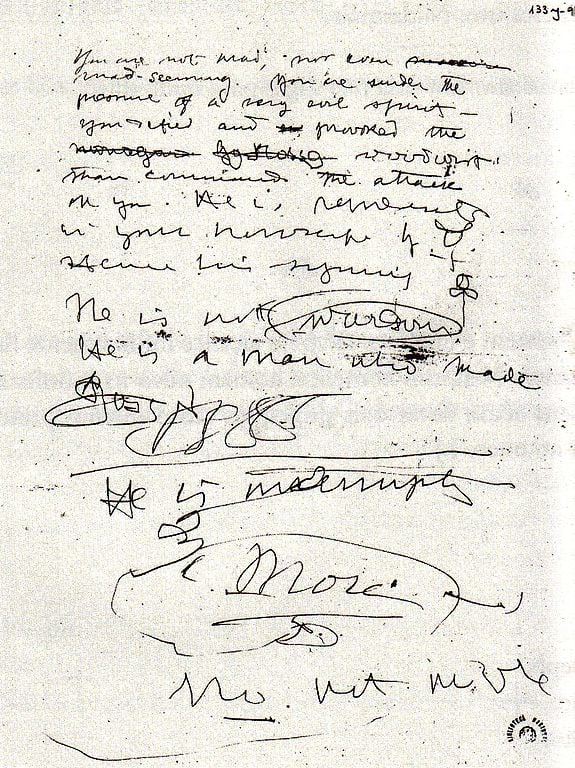
In that same letter, Pessoa reveals a different kind of mediumistic quality, as he puts it: “When Sá-Carneiro [Mário de Sá-Carneiro, a Portuguese poet and writer and one of the major Orpheu authors] was going through a great mental crisis in Paris, which would lead him to commit suicide, I felt the crisis here, a sudden depression came over me from outside, which I, at the time, could not explain to myself.”
Pessoa confirms he has also become a clairvoyant medium, experiencing something called astral vision or etheric vision – in other words, he writes that can see people’s auras. In fact, he states that one day at Brasileira, he could see the ribs of an individual through his suit and skin.
Pessoa considered these revelations as paths to higher knowledge and a means of transcending the limitations of everyday existence. Nonetheless, he didn’t trust them blindly; instead, he emphasized the importance of personal judgment and direct experience, stating that “The paths of Mysticism and Magic are often the paths of deceipts and error.” But he did believe in the possibility of achieving higher states of consciousness through mystical practices.
9. Most of Pessoa’s Works Were Published Posthumously

The word goes that during his lifetime, Fernando Pessoa published only one book – Mensagem. It is a collection of 44 poems published in 1934 and awarded with the Premio Antero de Quental.
However, he had actually self-published two other books almost 20 years earlier – 35 Sonnets and Antinous – which were quite well-received at the time.
In 1935, however, after publishing Mensagem, Pessoa passed away, so he never saw his other books being printed. But he did leave behind “a trunk full of manuscript poems and fragments of verse into which successive researchers have delved to produce a seemingly inexhaustible supply of unpublished writings,” as R. W. Howes puts it. More than 500 fragments of writing were found in the trunk.

During his lifetime, Pessoa wasn’t even that famous in Lisbon. Indeed, he did write and translate pieces here and there and was acquainted with other Portuguese literary figures, but the truth is – he had no major achievements except for the brief celebrity gained thanks to the Orpheu publications.
So he died without knowing that he would one day be regarded as one of the greatest authors who have ever lived. But then, he often prophesied the fame he’d receive after his death: “If after I die, people want to write my biography, there’s nothing simpler. They only need two dates: the date of my birth and the date of my death. Between one and another, every day is mine.”
When Pessoa died, only a few friends and acquaintances mourned him – as mentioned, he was a rather lonely being. It wasn’t until the 1940s that literary critics and historians recognized his genius.
